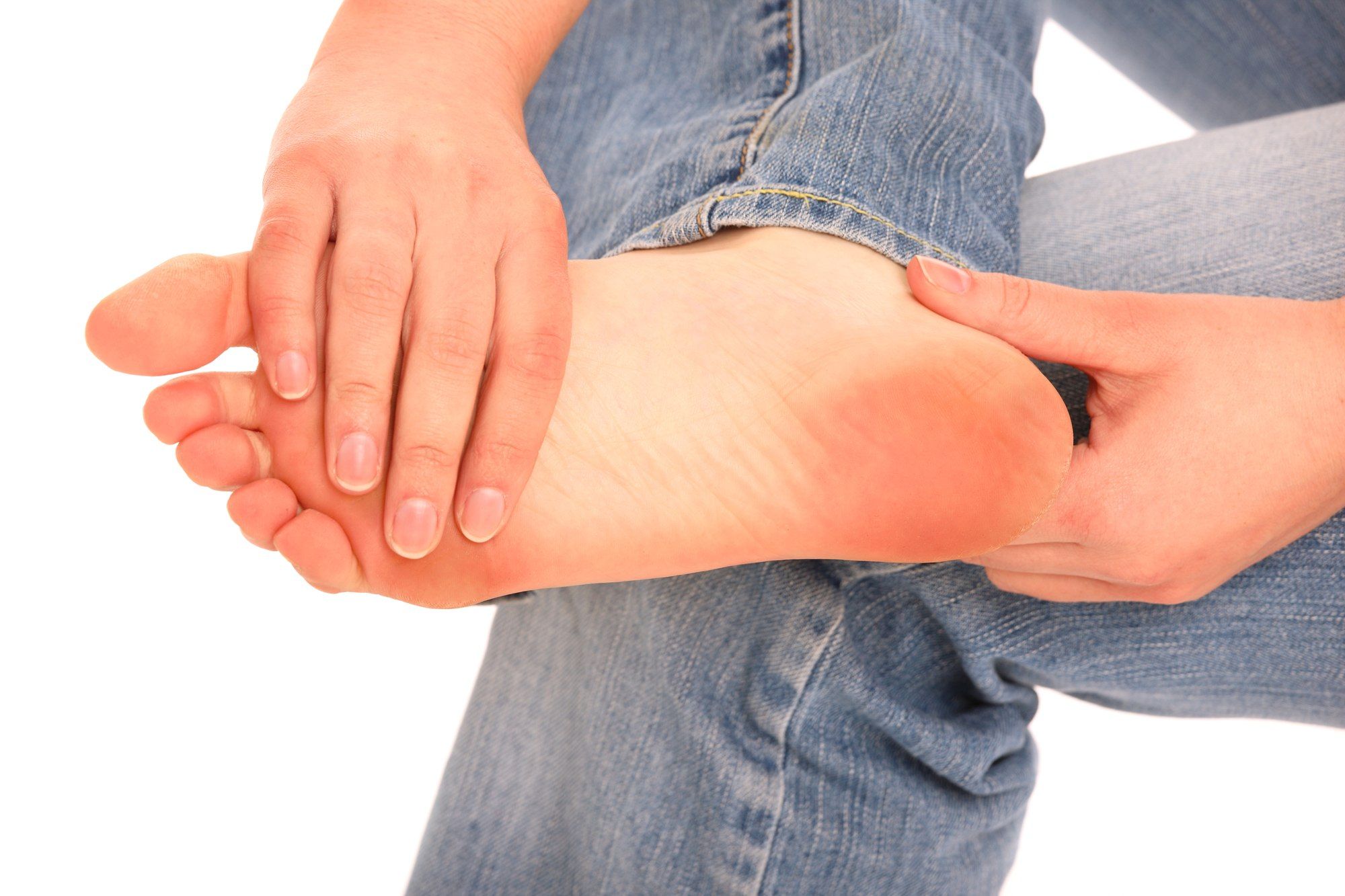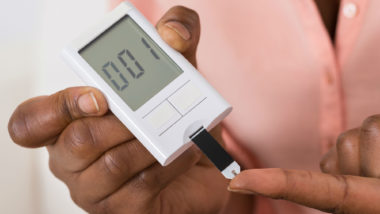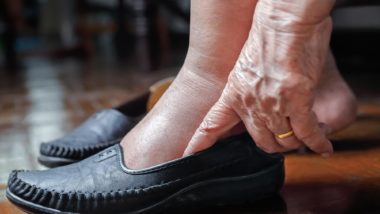Top Class Actions’s website and social media posts use affiliate links. If you make a purchase using such links, we may receive a commission, but it will not result in any additional charges to you. Please review our Affiliate Link Disclosure for more information.
Diabetics may be at increased risk for developing several associated conditions, some of which may result in amputations or other serious surgical interventions.
What are the Complications Associated with Diabetes?
People who suffer from diabetes are at risk for a variety of related health conditions due to damage to blood vessels and peripheral nerves caused by the condition. These related medical conditions may include peripheral artery disease and peripheral neuropathy, which both increase the risk of foot problems for diabetics.
Diabetics are also at an increased risk of developing ulcers, bunions, corns, calluses, hammertoes, fungal infections, dryness of the skin, and ingrown toenails. While these foot problems may also happen to people who do not suffer from diabetes, the condition increases the likelihood of them occurring, as well as the amount of damage they may cause.
Why Do Diabetics Lose Their Feet?
Diabetes causes decreased sensations from nerve damage and limited oxygen delivery to the extremities. These side effects of diabetes can also lead to a decreased ability to heal. Together, these can cause foot problems to become serious and lead to life-changing consequences.
Diabetic foot problems which result in foot injury may eventually lead to complications including dry gangrene, or tissue death due to an absence of blood circulation, and wet gangrene, or gangrene related to a bacterial infection. These complications can be insurmountable, and some diabetics lose their feet due to these complications.
In most cases, doctors will attempt to remedy the issue by removing the smallest amount of tissue as possible. For diabetic foot amputations, this may equate to removing only a toe or just part of the foot. If this doesn’t heal the problem or if blood flow doesn’t return, further parts of the limb may need to be amputated.
Medical News Today reports that diabetes plays a significant role in lower limb loss. The American Diabetes Association reportedly notes that, around the world, a person will lose a limb due to diabetes complications every 30 days.
A study from 2012 examined the prevalence of foot ulcers in diabetic patients and investigated outcomes to better understand the issue. According to the study’s results, 60 to 80 percent of foot ulcers will heal without issue. However, the study found that 10 to 15 percent will remain active after an initial evaluation and 5 to 24 percent will lead to limb amputation within 6 to 18 months.
Although having diabetes puts patients at an increased risk of amputation, some diabetes medications may amplify this risk.
According to a 2018 study published in the BMJ, medications including Jardiance and Farxiga may increase the risk of diabetics losing their feet or developing other serious health complications. The BMJ study indicates that diabetics who are prescribed medications in the sodium-glucose cotransporter 2 (SGLT2) inhibitors class of diabetes drugs, which includes Jardiance and Farxiga, are twice as likely to require lower-limb amputations as diabetics on other types of medication.
These results may be shocking and concerning to diabetes patients who were prescribed Jardiance and Farxiga to manage their condition and reduce the chance of life-altering side effects such as diabetic foot amputation.
Ways to Help Avoid Serious Foot Complications

A daily look at your feet can help you catch redness, cuts, bruises, blisters, or discoloration before a slight injury becomes a big problem. A magnifying glass can help you see smaller cuts or bruises.
Ensure your feet are maintaining their ability to feel sensations by stroking a feather or other light object on your feet. Also recommended on a regular basis – make sure your feet can feel the difference between warm and cold temperatures.
By wearing thin, clean, dry socks that don’t have constricting elastic will help you maintain proper circulation to your feet.
While daily exercise of at least 30 minutes a day is recommended, wiggling your toes and moving your ankles throughout the day on a frequent basis can help blood flow to your feet, too.
Diabetics lose their feet when small, sometimes imperceptible injuries occur to their feet. That’s why patients with diabetes are encouraged to wear properly fitting shoes at all times. In some cases, a doctor can prescribe specific shoes designed to help people with diabetes.
According to Healthline, patients should always wear closed-toe-shoes and avoid shoes with pointy toes, which can impair circulation to the toes.
Any sign of a foot ulcer should be taken seriously. Drainage from the ulcer that appears to stain a sock is one of the first signs of a foot ulcer. Tissue death, called gangrene, may appear around the ulcer if it becomes infected. Signs of gangrene include a smelly discharge, pain, or numbness.
What are Jardiance and Farxiga?
Jardiance and Farxiga are medications meant to help control type-2 diabetes. The drugs are both in the class of SGLT2 inhibitors and work by blocking the proteins that absorb glucose into the blood. These drugs prevent the kidneys from reabsorbing glucose. Instead, the glucose is filtered out of the body through urine. Healthline warns that these drugs are associated with many serious risks and side effects.
What are the Risks of Jardiance and Farxiga?
In addition to increasing the risk of lower leg, foot, and toe amputations, Jardiance and Farxiga are also associated with several other serious side effects, including:
- Yeast infections
- Urinary tract infections
- Increased urination
- Back pain
- Nausea
- Increased cholesterol levels
- Dehydration
- Low blood pressure
- Ketoacidosis, or increased ketones in your blood or urine
- Kidney damage
- Fournier’s gangrene, or necrotizing fasciitis of the perineum
With the help of an attorney, diabetics who suffer from serious consequences associated with Farxiga or Jardiance may be able to pursue compensation for their injuries, pain and suffering, medical expenses, loss of income or earning capacity, and other damages.
If diabetics lose their feet due to these medications, they may be entitled to additional compensation for permanent disability and disfigurement.
If you or a loved one experienced diabetes amputation after taking Jardiance or Farxiga, you may have a legal claim and may be eligible to seek compensation from the drug maker for your medical and other expenses. Fill out the form on this page now to see if you qualify!
ATTORNEY ADVERTISING
Top Class Actions is a Proud Member of the American Bar Association
LEGAL INFORMATION IS NOT LEGAL ADVICE
Top Class Actions Legal Statement
©2008 – 2024 Top Class Actions® LLC
Various Trademarks held by their respective owners
This website is not intended for viewing or usage by European Union citizens.
Get Help – It’s Free
Join a Free Jardiance, Farxiga Diabetes Amputation Class Action Lawsuit Investigation
If you qualify, an attorney will contact you to discuss the details of your potential case at no charge to you.
If you took Invokana or Invokamet, you do not qualify for this investigation. Click here to join a separate class action lawsuit investigation.
PLEASE NOTE: If you want to participate in this investigation, it is imperative that you reply to the law firm if they call or email you. Failing to do so may result in you not getting signed up as a client or getting you dropped as a client.
E-mail any problems with this form to:
Questions@TopClassActions.com.
Oops! We could not locate your form.













